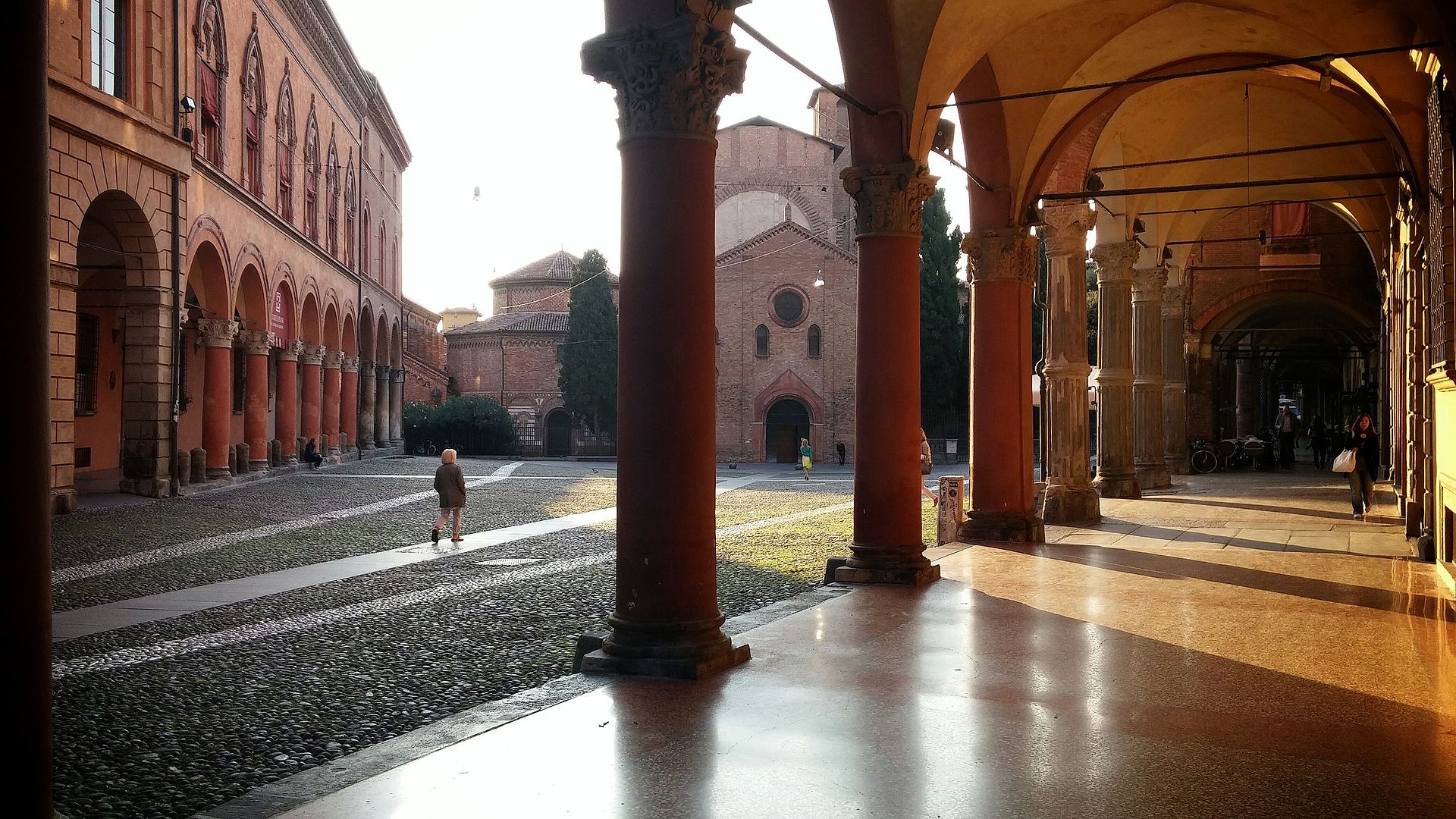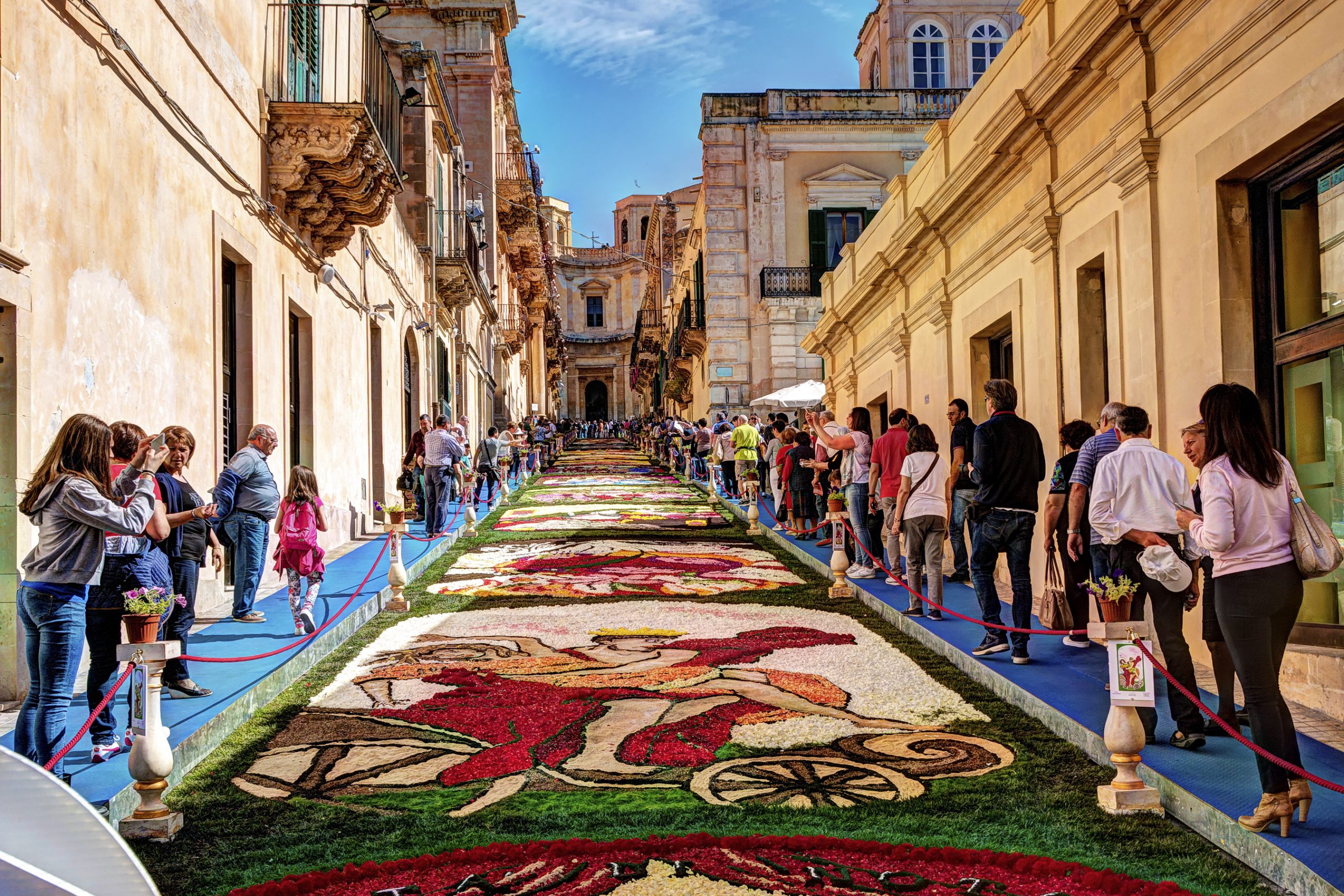With seven churches in one, it’s easy to get lost in Bologna’s Church of Santo Stefano, commonly called the “New Jerusalem”. Modeled after the Church of the Holy Sepulcher in Jerusalem, the seven churches that make up Santo Stefano are located in the city center of Emilia Romagna’s capital.
It all began in the 5th century when Bishop Petronio, the patron saint of Bologna, built a settlement over the temple of the goddess Isis. Throughout the centuries, many churches and structures were added onto this building. Today the seven churches of Santo Stefano are melded together forming an exquisite labyrinth full of historic nooks and crannies.
Bologna invites you to lose yourself in this age-old wonder.
First, cross the cobblestone canvas of Piazza Santo Stefano and enter the dark wooden door leading into the Church of the Crucifix. This is the largest of the seven churches. The church dedicates a space to the Passion of the Christ with a striking 18th century sculpture named the “Lamentation over the Dead Christ.” Above the stairs hangs a 14th century crucifix that inspired the church’s name.
On the mezzanine above the stairs is the altar and underneath lays the crypt, built in 1019. Many people come to this sacred crypt to pray. It is divided into a series of antique columns, one of which is allegedly the exact height of Jesus.
Exiting the crypt underneath the stairs you’ll see a small door to the right. Behind this unassuming door is a round shaped Holy Sepulcher with an 8th century reproduction of Christ’s tomb modeled after the tomb in Jerusalem. The building is adjoined by two Churches, as is the one in Jerusalem.
Behind the massive tomb reproduction you’ll find the Church of Saints Vitale and Agricola. This is Bologna’s oldest church that has been remodeled many times, especially after World War II bombings. Roman masonry and remains of the original mosaic floor remain intact, along with previous Roman and Byzantine building styles.
With a bare basilica structure, this church holds the ancient graves of Saints Vitale and Agricola that were exhumed by Saint Ambrogio in 392. Vitale and Agricola were master and servant who became Bologna’s martyrs when they lost their lives in 305 AD due to Emperor Diocletian’s persecution. The sarcophagi are adorned with remnants of lion, deer, and peacock.
Return to the Church of the Holy Sepulcher and enter the open doorway into Pilate’s Courtyard. There is a gigantic white birdbath in the middle of the courtyard, only it is no ordinary birdbath. It is actually an 8th century reconstruction of Pontius Pilate’s washbasin made in Lombardy. After Pilate sentenced Jesus to death, legend has it that he washed his hand in this basin’s originally located in Jerusalem.
Stand on your tiptoes to marvel at the marble basin for a few minutes; then continue through the courtyard into the 13th century Church of the Trinity or the Martyrium, which contains the ancient Nativity. The wood sculpture represents the Adoration of the Magi.
Follow the Church of the Trinity through to the medieval cloister. The first floor was constructed around 1000, while the second floor has Roman-Gothic hues and columns depicting horrifying violent images. Dante Alighieri allegedly came to this courtyard often to study and reflect. The violent capitals of the medieval cloister inspired Dante to write the methods of atonement described in Purgatory.
On the other side of the cloister porticos stands the museum of Santo Stefano, with rare religious objects and works of art from the diverse seven churches. For example, the asserted rock that killed Saint Stephen and rare fresco paintings depicting the lives of Bishop Petronio and Saint Stephen.
In whichever corner of Santo Stefano you find yourself, be sure to enjoy the rich history of Bologna’s ecclesiastical gem. Get lost in the twists and turns of the magnificent maze that is Santo Stefano Church.






























